A complete guide to finding the right ethical outdoor clothing and making your time outside more sustainable
It’s no secret that the clothing industry has a pretty shocking impact on the environment. But, did you know, it’s actually the second largest polluter in the world, only being topped by oil?
In terms of carbon emissions, as an industry, it actually causes more harm than both international flying and maritime shipping combined. Pretty crazy to think, right?
Outdoor pursuits and lifestyles require lots of adventure equipment and clothing, meaning they can have a big impact. Your time outside absorbed in beautiful natural locations could actually be more damaging than you realise…
We’re not saying you should limit your time outside – HELL NO – far from it. Embracing ethical adventures and learning to appreciate your surroundings is one of the most powerful steps in protecting this fantastic world we all call home.
Instead, we think you should dive straight into the outdoor realm and become as absorbed as possible – just do it with ethical outdoor gear.
There are plenty of tips and tactics you can easily adopt to make sure there isn’t a hidden price to your clothing and equipment. And, it’s not going to cost you an arm and a leg either, in most cases it’ll actually save you money, help you find better products and get you more involved in the outdoors!
Keep reading this article to find out:
- What is ethical outdoor clothing?
- How can outdoor gear impact the environment?
- Considerations before buying
- Eco tips for buying new outdoor gear
- Gear TLC, repairs & Recycling
- Ethical outdoor brands to look out for
- Where to buy sustainable outdoor gear?
- Eco-Friendly certifications to keep your eyes on
- Become an eco investigator
- Other ways to make your time outside more environmentally-friendly
- Your questions answered
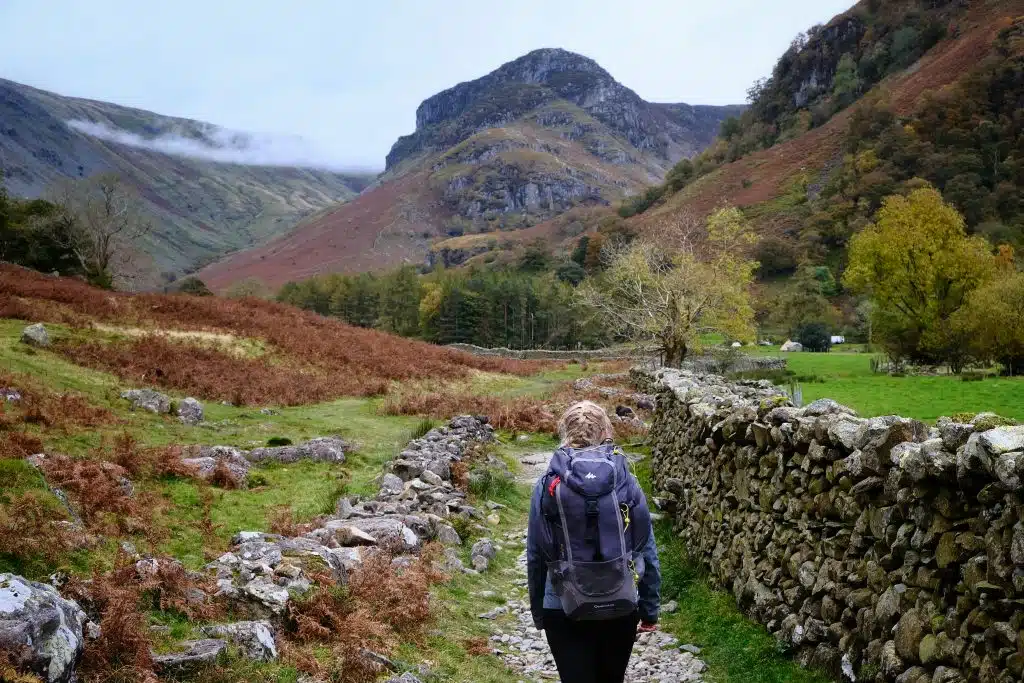
1. What is ethical outdoor clothing?
In our eyes, ethical outdoor clothing brands or products are ones that put an emphasis on environmental, animal and human welfare. It’s pretty difficult to be perfect in every aspect but it’s our aim to highlight gear that comes as close as possible. And, real importantly, can deal with everything you throw at it in the wild.

2. How does outdoor clothing impact the environment?
It’s sometimes shocking when you find out the impact even small items can have but it’s always important to be aware.
Here are some of the impacts. Remember, responsible gear is the solution, not cutting down on adventure!
Synthetic materials (polyester, nylon, rayon, acrylics etc)
Synthetics are used in almost all outdoor clothing and can be damaging in a number of ways:
- Synthetic fibres require huge quantities of water to be created, they release carbon dioxide into the atmosphere (contributing to global warming) and sometimes nitrous oxide, which is significantly more harmful than CO2.
- Synthetics are naturally not biodegradable and are difficult to recycle.
- Synthetics create massive problems with microplastics, which accumulate in nature, harm our environment and impact our drinking water.
Waterproofing
Waterproof clothing or items with a durable water-repellent finish (DWR) often contain perfluorinated compounds (PFCs) or PTFEs. Both are toxic but are now being found in air, water, natural ecosystems and even human beings because of the fashion industry.
Leather production
Rearing cows is extremely water-intensive, a leading cause of deforestation and the tanning process uses toxic chemicals which pollute water sources all around the world.
Water Issues
Clothing uses almost unbelievable quantities of water in production, with one cotton t-shirt estimated to use 2,500 litres! Fast fashion significantly contributes to worldwide droughts and water shortages whilst clothing factories and sweatshops poison water sources with chemical byproducts and waste.
Waste
Unfortunately, most clothing doesn’t finish its life with style: nearly 75% of clothing doesn’t get recycled and due to the increased amount of synthetic materials will likely sit in a landfill for hundreds of years.
Human welfare
To turn the biggest profit often means clothes are produced in the cheapest means possible. Unfortunately, these supply chains are a huge driving force behind sweatshops, modern-day slavery and unethical working conditions, often leading to health implications after exposure to toxic chemicals.
Animal Welfare
Whilst there are lots of other issues which can cause harm, the main culprits are leather (used primarily for footwear), feathers and wool (used for insulation) and to a lesser extent fur (may be used to line coats or hoods). Sometimes this is a byproduct, sometimes it’s not. Either way, annually it contributes to the unnecessary suffering of billions of animals.
Want to find more vegan clothing? We put together a Guide to Vegan Outdoor Clothing Brands
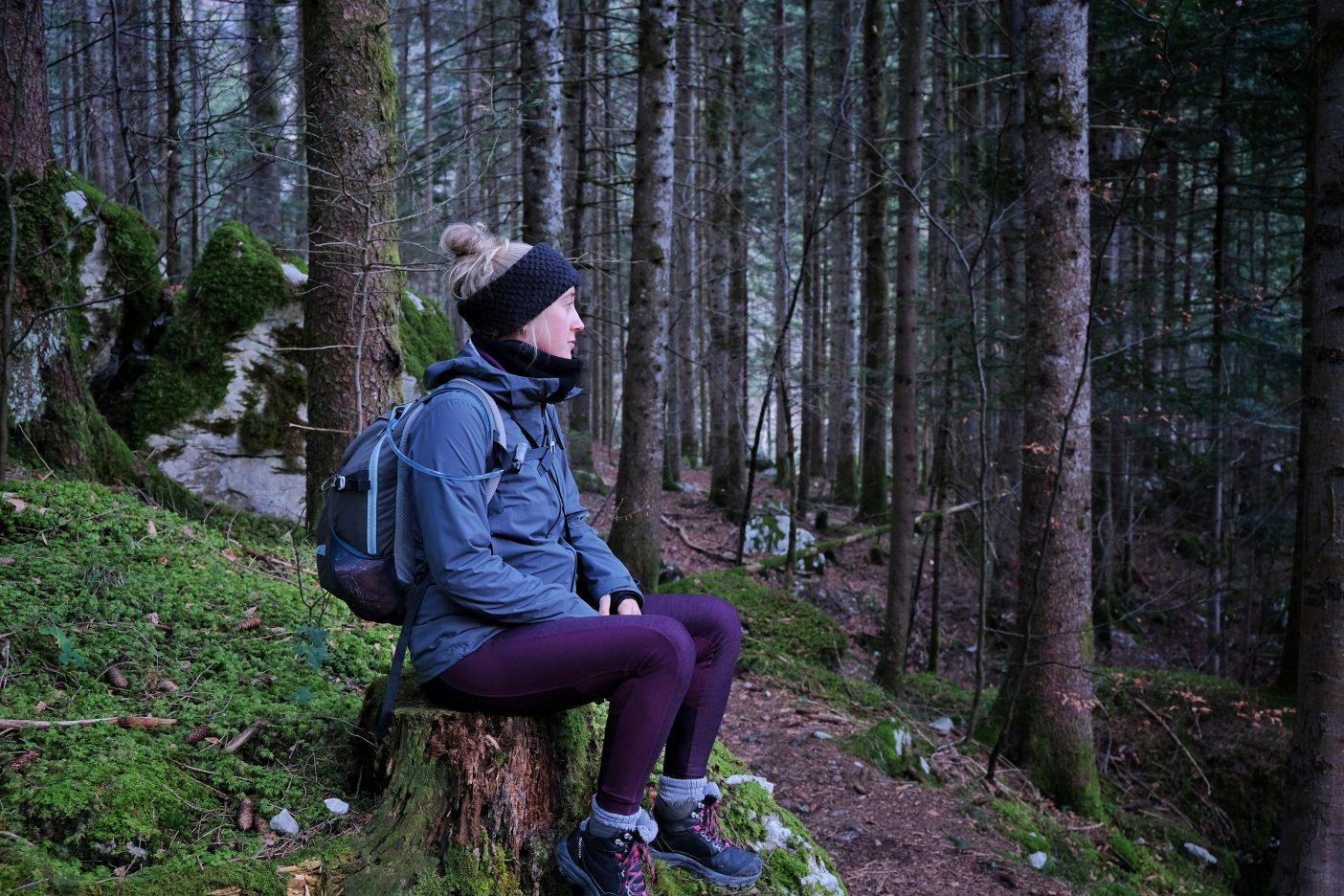
3. Some simple but powerful thoughts before you buy outdoor gear new
Do you really need it?
As Yvon Chouinard famously said, “don’t buy this jacket”. Whilst this marketing campaign may have actually increased sales, its essence remains true: as consumers, we need to think twice before buying gear.
Quite simply the most sustainable thing to do is to reduce consumption. We’re not suggesting heading into the wild Naked and Afraid-style, just honestly asking yourself whether it’s a necessity. The points below can also help.
Can existing gear be repaired?
Unlike fast fashion items, outdoors clothing is built to last so think about getting them repaired before buying something new. With the increase in ethical consumerism, most adventure clothing brands now have impressive product warranties and repair services.
We’ve created this complete guide on how to repair and maintain your outdoor gear to make it last for years
Can you borrow or rent?
If it’s not going to be a regular activity then do you need to buy gear? Nowadays, for most outdoor pursuits you’ll find plenty of companies to rent gear from, like Outdoor Hire (UK) and Outdoors Geek (US). Failing this, you could even ask your adventure-loving friends to lend you things? This will help cut down on unnecessary purchases and save you some money!
Can you buy second hand outdoor gear or use a gear exchange?
You can find absolutely ace second-hand equipment and this is one of the most environmentally friendly options. It can save you money and also help you meet like-minded people in the community. Awesome sources for this are:
- Charity/second-hand/consignment/thrift shops etc
- Jumble, garage or car boot sales
- eBay
- Gumtree
- Freecycle
- Preloved
- Le Bon Coin (France)
- Facebook Groups like Outdoor Gear Exchange (UK) or the Outdoor Kit Group (US)
- The Outdoor Gear Exchange (online adventure swap shop)
Nowadays you can also buy used gear directly from the brands, like:
Patagonia Worn Wear REI Used Gear Arc’teryx Used Gear
If you’re serious about outdoor adventures, don’t miss our roundup of the Best Arc’teryx Jackets.
Enjoying this article and want to find more eco-friendly outdoor gear? Sign up for our newsletter for all the latest tips and product finds!
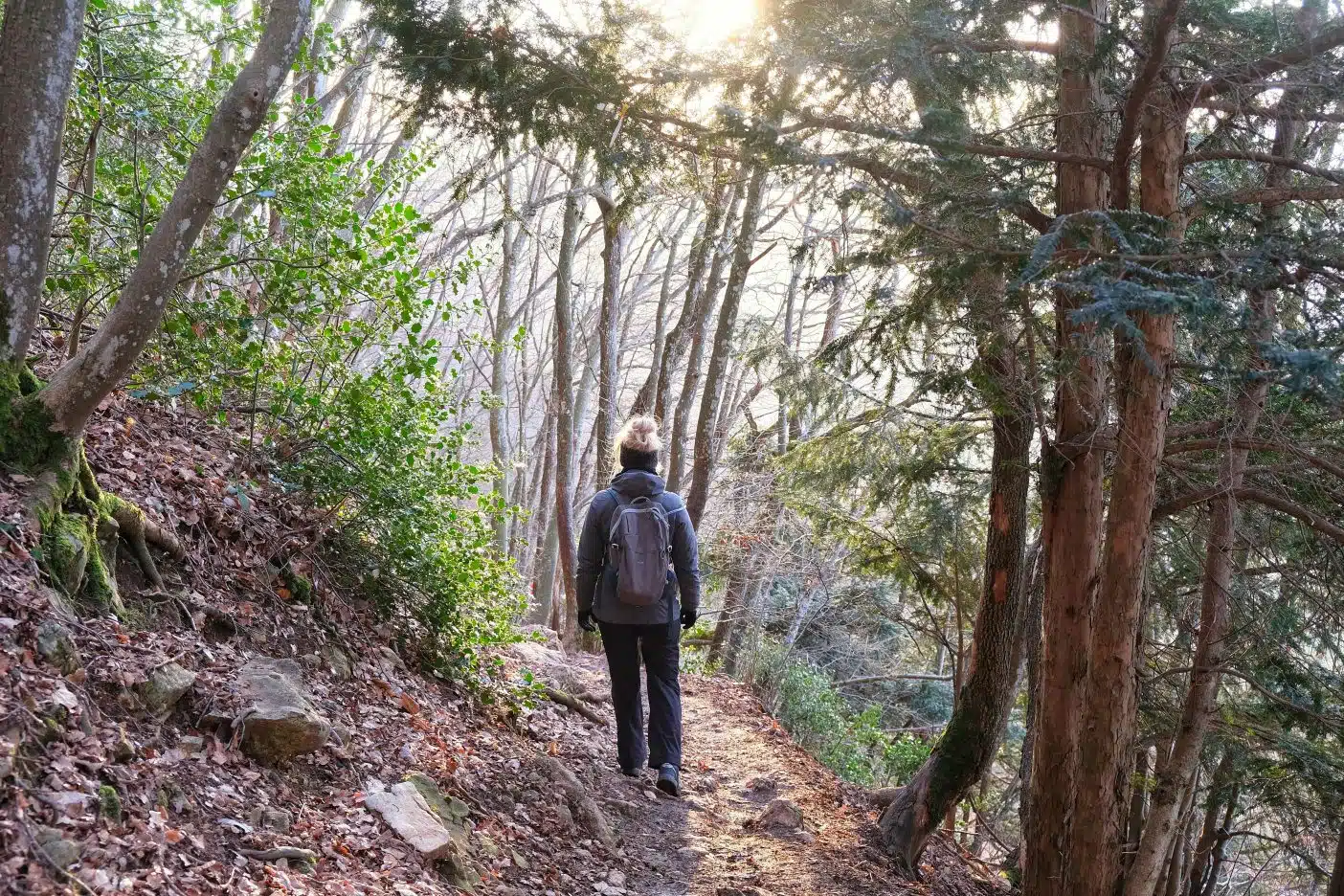
4. Tips and considerations for buying new ethical outdoor gear
Sometimes it’s unavoidable buying new gear or maybe it’s just the best option. If you are buying new, the tips below can help to make it more eco-friendly.
- Do your research before and opt for sustainable products from brands that are closer to home (more info further down)
- Make sure you get the right size to make returning it less likely
- Take your time and invest in the best quality option that will last
- If you’re shopping in person, bring your own shopping bags to minimise plastic waste
- Try to travel to shops in the most sustainable means possible (cycling, public transport etc)
- If shopping online, avoid next day delivery and try to have items shipped together
- Choose minimal packaging for deliveries
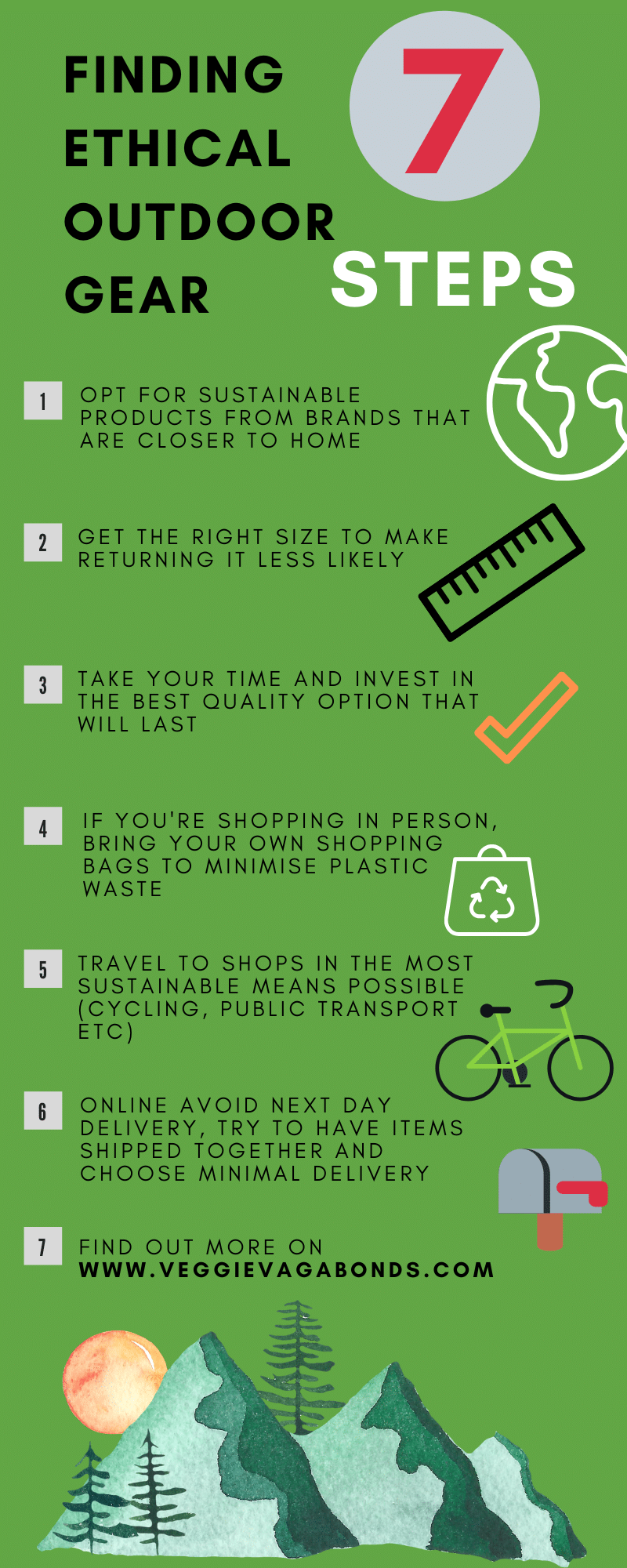
5. Gear TLC, repairs and recycling
Whether you’ve bought second-hand or gone for new, now the best step is to give your gear a long life. Unlike fast-fashion clothing, adventure gear is built to last, so invest in the right products, give them some TLC and they can last a lifetime.
It’s by far the most sustainable thing to do, will save you money and you’ll develop prized items that have been with you for years!
Gear TLC and maintenance
Use it for its proper use (yes, that means taking off that beloved insulated jacket every now and again), clean them as described and make sure it’s stored properly when not being used. For things like tents and camping beds this is especially important, make sure you leave them to air and dry so they don’t go mouldy.
Repairs
Simple repairs can easily be done at home. You’ll be amazed at the things a sewing kit, super glue, ducktape and zip ties can fix. If your waterproof items are letting in moisture, you can use products like
If it’s something a bit more complicated, most adventure clothing brands now have great repairs services and long product guarantees. Get in touch with them and they’ll hopefully be able to fix the issue, without you needing to buy anything new. You’ll find a list of links to brand websites at the bottom of the article.
Recycling
The last stage of the lifecycle, but one of the most important. When it’s time to get rid of your gear make sure to recycle it – what’s no longer needed for you could be used for new clothing or other people. Some recycling ideas are:
- Donate it to a charity/second-hand shop or organisations like Gift Your Gear
- Sell it on eBay, Gumtree or any of the other suggestions listed in the second-hand gear section above
- Sell it back to the manufacturer: companies like Arc’teryx, Patagonia, REI, AlpKit North Face can reuse them
- Find a clothes recycling point
- You can find plenty more tips in our big Guide to Recycling Outdoor Clothing & Equipment.
Have any more recycling ideas? Share with us in the comments at the bottom!
Explore more…
B Corp Brands for Outdoor Lovers
How to Re-Waterproof Your Hiking Boots
6. Eco-friendly brands pioneering the way for sustainable outdoor gear
Nowadays, it’s pretty easy to opt for more sustainable outdoor clothing brands. There are plenty of companies that are really paving the way for green adventures and to keep that happening it’s important to support them. If you’re buying new gear, these are some companies to check out!
1. Vaude
A german-based company who are trailblazing sustainable innovation for outdoor pursuits. Vaude have a huge range of vegan clothing, they’re completely transparent with their functioning and their Fair Wear Foundation ensures ethical working conditions.
Most impressively though is Vaude’s research into sustainable materials. Having developed the world’s first biodegradable fleece, their Green Shape range features products made from recycled materials, created with less water, less chemicals and less CO2. On top of this, they’re working to minimise product packaging and are Bluesign® approved (more info on bluesign® below).
Great for: hiking, camping, cycling gear
2. Cotopaxi
Cotopaxi are one of the few major outdoor brands that are certified B-Corporations (a tiny percentage of business that do a whole lotta good, more info below).
Not only are many of their products made from recycled and eco-friendly materials but a large portion of their profits also get reinvested into social enterprises, foundations and environmental initiatives. We love some of their sustainable backpacks!
On their products information, you’ll find details about the factory they were produced in, fair labour practices and about the work Cotopaxi are doing in the community.
Great for: colourful outdoors equipment and casual clothing
3. Patagonia
You couldn’t have an ethical adventure clothing guide without including Patagonia! This California-based outdoor company is largely behind the huge increase in environmental awareness within the outdoor industry today and their gear rocks!
They’re striving to make their supply chain carbon neutral by 2025 and are a driving force behind sustainable materials, but it’s their mission for environmental responsibility which is having a big impact in the outdoors community.
As a self-titled activist company, it’s inspiring adventure-lovers to have more of an active role in protecting the environment – awesome work Patagonia!
Great for: sustainable hiking gear, camping and climbing equipment

4. Save The Duck
An Italian brand that became known for helping Kuntal Joisher become the first vegan to climb Everest with completely vegan apparel.
All of their products are vegan with many using recycled materials for insulation and PFC-free waterproofing technology. Their website has great transparency and you can see exactly what is in all the outdoor technology they use.
In terms of ethical items, they really tick all the boxes, plus you’ll find a range of clothing from casual wear all the way to expedition-level equipment.
Great for: completely vegan outdoor clothing and activewear
5. REI
Clothing brand, adventure retailer and a household name for adventure lovers. Many REI clothes are bluesign® approved, with affordable options that utilise vegan and eco-friendly materials.
As a retailer, REI stocks all of the best outdoor brands and makes it very clear and easy to find sustainable outdoor clothing options as well as having a used gear section online.
Most notably, REI does truly great work inspiring the outdoor community. You can find adventure workshops and training courses, as well as sessions to repair your own gear.
They’re encouraging a new wave of eco-conscious explorers and make the outdoors accessible with detailed resources online, explaining everything from gear maintenance and sustainability tips, to camping hacks and hiking advice.
Great for: the Mecca for all US-based outdoor equipment and advice
6. Kathmandu
Another B-Corp outdoor brand hailing from New Zealand. In their words, they believe “they have an opportunity, and responsibility, to help create a better world” and are laden with environmental awards and acknowledgements.
Just some of their recent initiatives involved huge tree replantation schemes, recycling 10 million plastic bottles into their clothing and big community projects in Nepal.
You’ll find a great selection of fairtrade outdoor clothing, vegan clothes, plenty of ethically-sourced materials and high-quality gear for a wide range of outdoor pursuits.
Great for: everything from outdoor clothing and footwear to snow gear, camping and winter sports.
7. La Sportiva
If you’re looking for responsibly produced hiking shoes and outdoor footwear with a great vegan range, La Sportiva are top of the pile. They’re Bluesign® approved, support 1% for the planet and are on track to making all their footwear PFC-free.
Another cool aspect of La Sportiva is that their staff dedicate time to local conservation projects and their factory uses 100% renewable energy!
Topping things off, their outdoor footwear is out of this world and they’ve got a huge range of vegan hiking boots too. My pair of Trango GTX hiking boots have kept me going for years!
Great for: the highest quality technical hiking boots, trail runners and general adventure footwear
8. Prana
Prana are a cool activewear company which became the first North American apparel brand to produce Fairtrade outdoor clothing. Most of their products have switched to organic cotton and opt for PFC-free waterproofing whilst also have a big selection of cruelty-free options.
Great for: comfy casualwear, yoga clothing and chilled ethical climbing gear
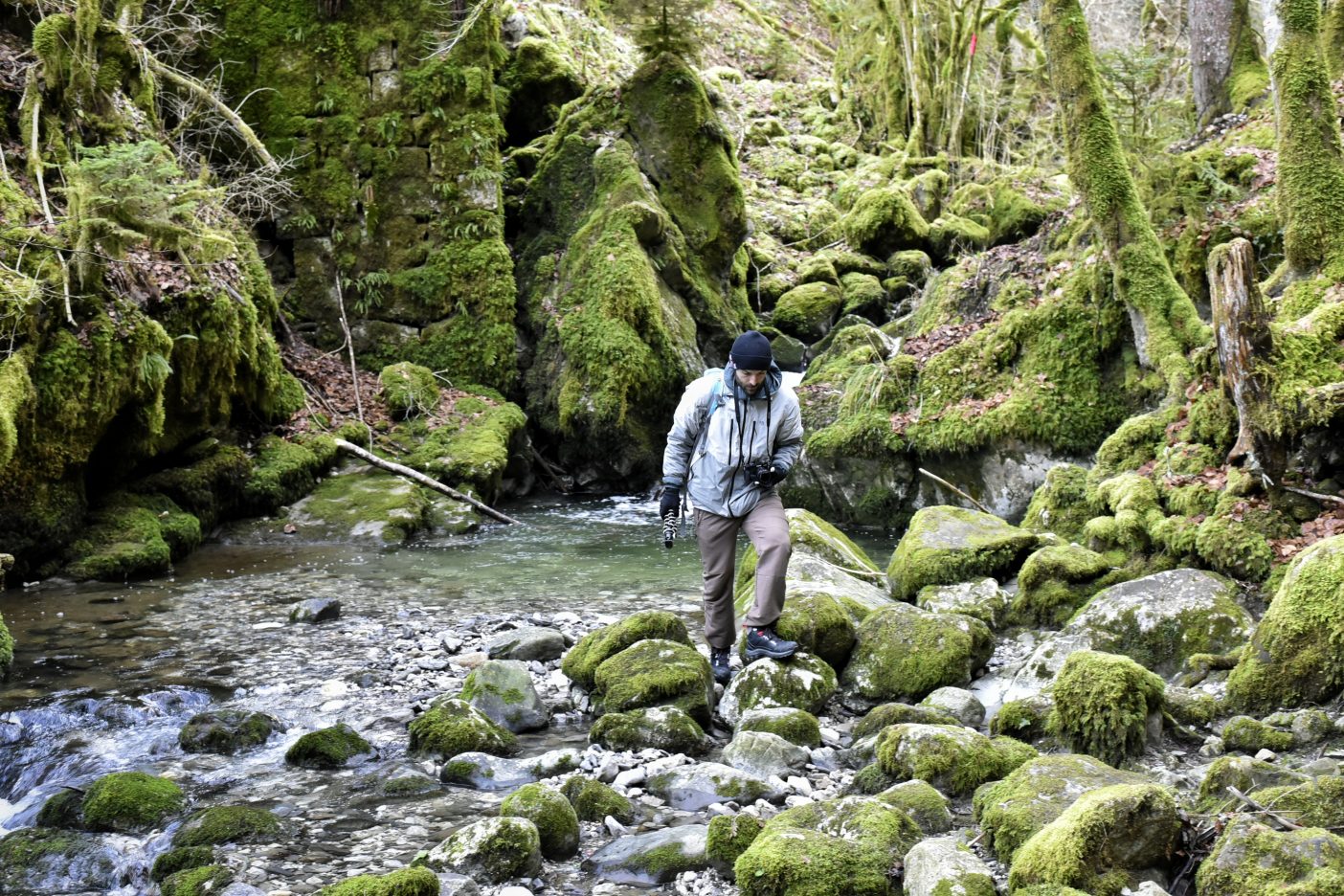
7. Where to find the best ethical adventure clothing
You can shop directly with brands you know have ethical items (like the ones above), or go with outdoor suppliers which have eco products from a huge variety of outdoor companies. The ones suggested below all have search functions for sustainable materials and clearly show ethical certifications and vegan-friendly products:
Cotswolds (UK-based)- Weekend Bee (European and only sells sustainable outdoor brands)
Go Outdoors (UK-based)Outdoor Gear Ex. (US-based)REI (US-based)Moosejaw (US-based)
8. How to tell if something is sustainable and eco certifications to look out for
It’s all well and good saying try and buy sustainable! but how can you actually tell? Nowadays, ‘eco-friendly’ has become a major selling point and the certifications listed below will normally be advertised with pride. If you’re shopping in-store the info might be on the clothes tags and online on the product description. These are things you can look for:
Recycled materials
Plenty of brands now use recycled materials in their gear and don’t be fooled, it doesn’t impact the quality at all. It might be made from recycled polyester, reused clothing or even things like collected plastic rubbish, then it gets a second life in insulation, clothing, backpacks, shoes, tents, you name it.
Recycled materials may also be called post-consumer materials or show a percentage of the recycled materials used.
PFC-Free and PTFE-Free
Normally this is to show that materials have been made waterproof or DWR without the use of PFCs or PTFEs, two chemicals which both have big environmental impacts.
B Corporation companies (B-Corps)
B Corp certification is reserved for the most environmentally responsible outdoor clothing companies. These companies “meet the highest standards of verified social and environmental performance, public transparency, and legal accountability to balance profit and purpose“. The transparency aspect is very noticeable and you’ll be able to find extensive information about the companies materials, processes and functions online.
Vegan-Friendly
This might not always be an official certification but will hopefully be seen in the product information. These items will be free from animal cruelty and a definite strong point for ethical outdoor gear.
Bluesign ® certified
The Bluesign® certification is a strict criterion used for businesses who put a strong emphasis on people, the environment and resources. It works at all stages of the production and supply chain to make sure the processes, chemicals and materials are safe for the environment, workers and for the end customers. Product materials will sometimes be called Bluesign® approved or Bluesign® certified.
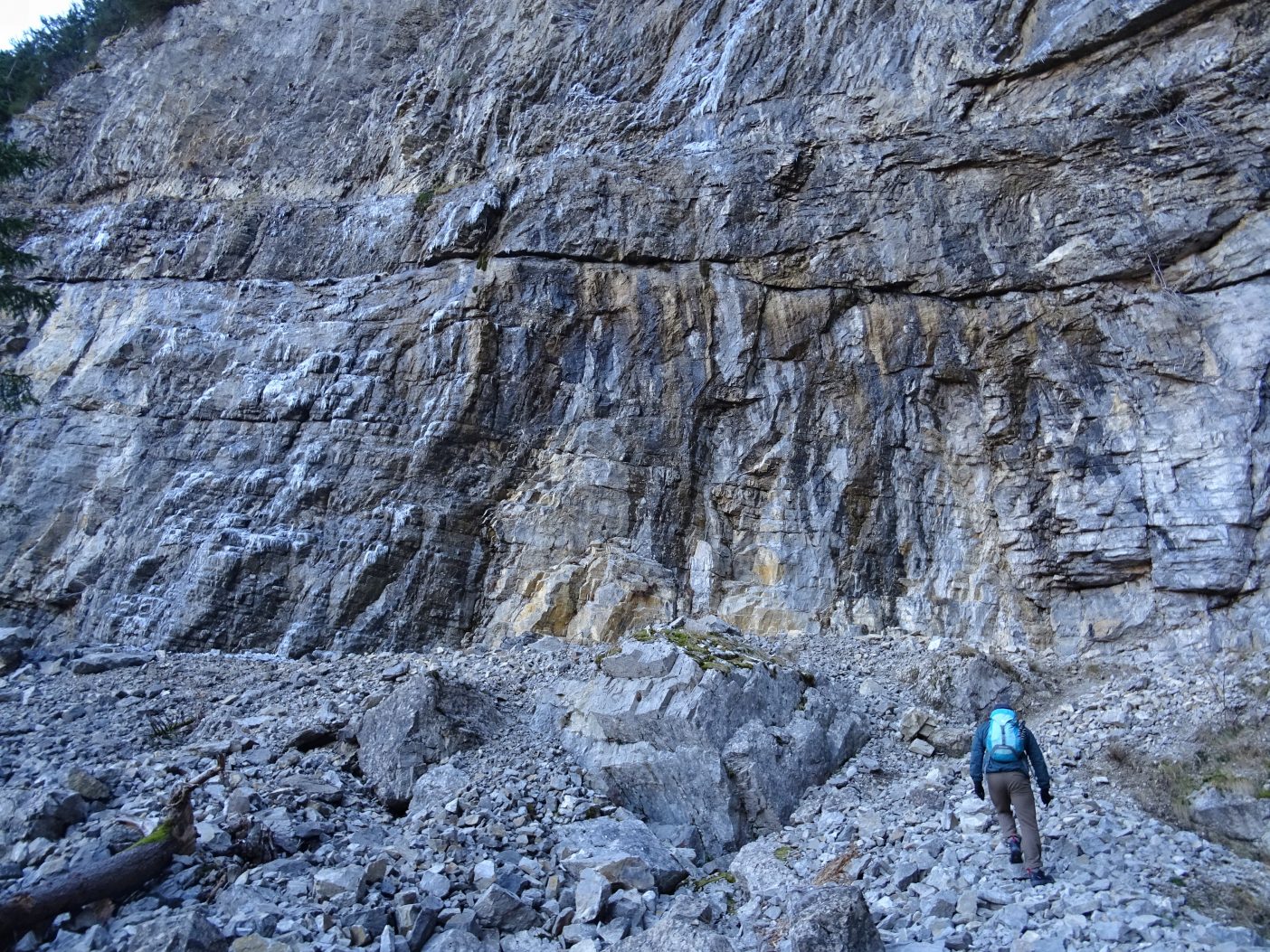
Fair Trade Certified™
Generally, Fair Trade certification is given to brands for notable human welfare standards, particularly in developing parts of the world. This might include workers’ rights, fair wages, community development or local funding and initiatives.
Organic Materials
Most often, this is used to talk about cotton and means it’s created with less of an environmental impact, using pesticides or chemicals. There has been a big increase in organic outdoor clothing brands using organic materials like hemp and also bamboo.
Forest Stewardship Council™ (FSC)
Not so common with outdoor clothing but with other outdoor equipment you might see an FSC approval. This is to show that any timber-based products were produced with the highest environmental standards throughout their supply chain.
Animal-based product certifications
Whilst we don’t promote the use of products that cause animal cruelty, if you are going to use them there are some certifications to look out for. Responsible Down Standard (RDS), Responsible Wool Standard (RWS) and Leather Working Group (LWG) are all given to companies that stick to certain animal welfare and environmental standards.
Fair Wear Foundation
An ethical certification for brands who focus on labour standards within the clothing industry, improving working conditions and employee welfare.
1% for the planet
Given to companies who commit at least 1% of profits into trusted environmental organisations, charities and non-profit groups.
Oh, and be careful of greenwashing!
‘Eco-friendly’ has become a major selling point so be careful of greenwashing (trying to sell something as environmentally friendly when it’s not).
When brands add general ‘eco’ terms to clothing, e.g eco-friendly hiking boots, eco insulated jacket, green insulation, ethical sleeping bag, sustainable materials, natural materials etc. you should be vigilant. The product might have nothing intentionally sustainable about it but the term is just added for a selling point.
Check the product information for any of the certifications listed above to be sure!
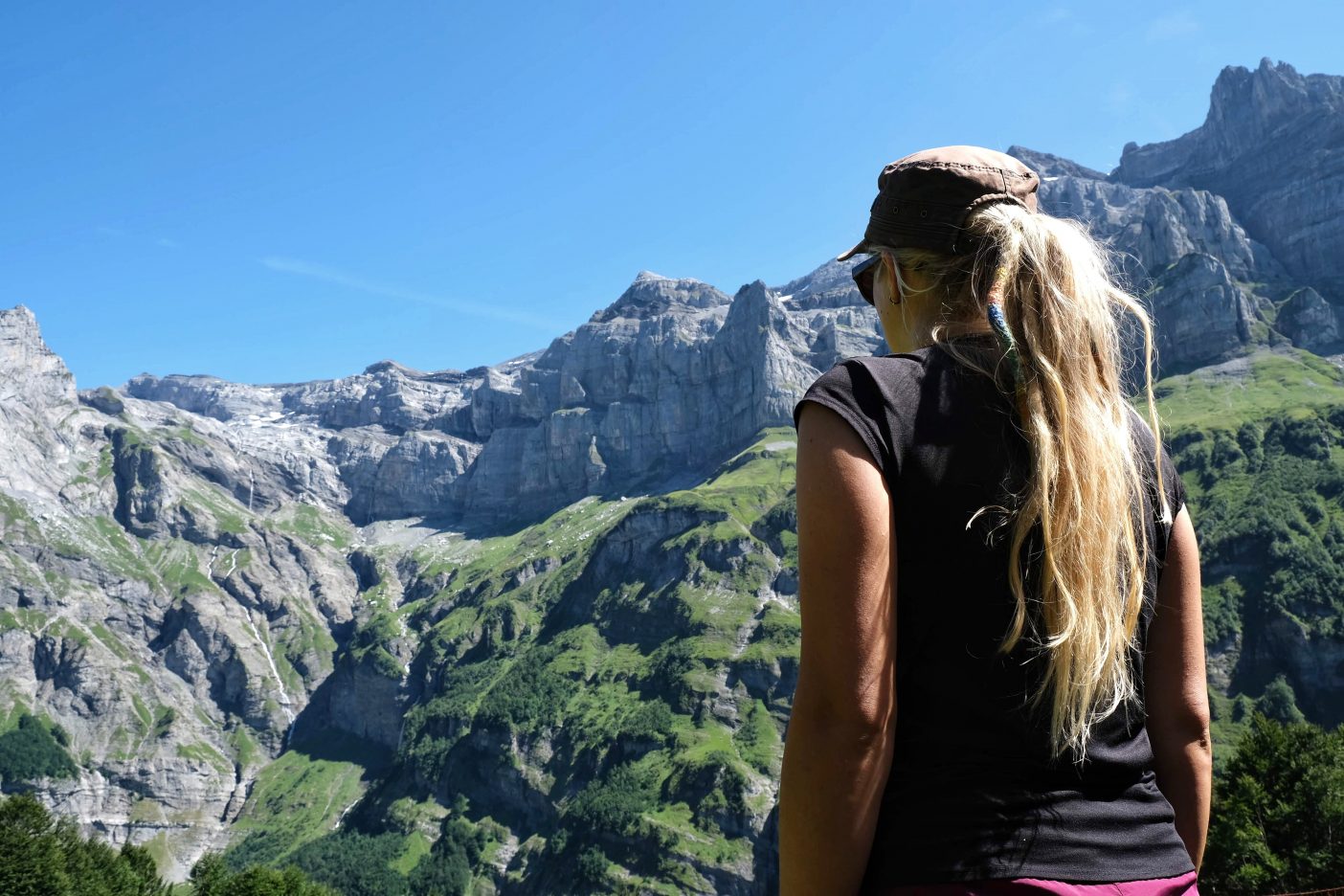
9. Become your own sustainable outdoor clothing detective
To really make sure you’re supporting the right brands and buying ethical products, it’s best to become your own eco detective. Bluesign and B Corp both have lists of brands who are doing the right thing, whilst the Higg Index and Rankabrand both have ratings for outdoor brand eco-efficiency.
Alternately, you can look directly to the brands and find out their sustainable policies and goals. Here are some useful links below…
10. Other ways you can make your time outside more sustainable
There are plenty of other ways you can make your adventures more eco-friendly, gear is just the tip of the iceberg. Some ideas you could explore are:
- Opt for lower-impact adventures (we put together a list of 90+ ideas)
- Try to go as plastic-free as possible
- Pick sustainable transport choices
- Go for alternative destinations
- Practice the Leave No Trace Principles
- Opt for eco-friendly food options on the trail
- Try meat-free food off the trail too – it has a big impact
You’ll plenty more tips, ideas and tactics in our Guide to Sustainable Hiking and Eco Camping Tips.
Your Questions Answered
How can you tell which clothes are environmentally-friendly?
What outdoor brands are the most sustainable?
How can you make outdoor pursuits more eco-friendly?
Is it better to buy new or second hand?
What is greenwashing and how can I avoid it?
Want more tips on finding the best outdoor clothing with a lower impact? Want to share your thoughts? Tell us in the comments!

The Ultimate Guide to Ethical Outdoor Clothing and Sustainable Gear
We said it before and we’ll say it again: the answer to a lot of the environmental issues of today is getting outside and learning to appreciate your surroundings. Outdoor pursuits are the perfect way to do that, just doing it the right way!
Brands like Patagonia, Vaude and REI are making this all possible, creating clothing which is cruelty-free, better for the environment and produced in an ethical way. By supporting these companies and initiatives, more brands will develop greener practices, leading to a greener future – a future most definitely filled with adventure!




